Orbea’s carbon fibre Rise was one of the first ‘lightweight’ electric mountain bikes (a relative term when you’re talking about machines around the 20kg mark).
This new, cheaper alloy version takes the same basic template but adds a much bigger battery.
Obviously that increases weight, but how does it affect the ride?
Orbea Rise H10 frame details
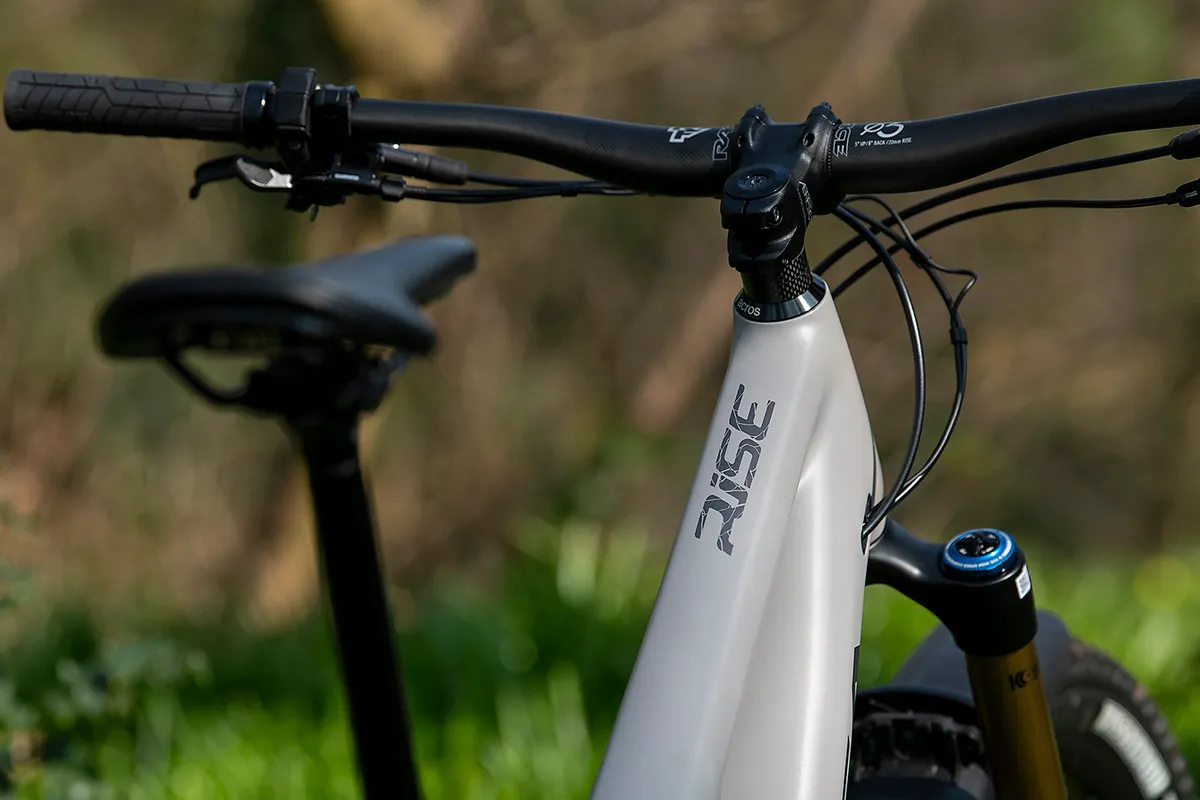
Smoothed welds at the head and seat tube junctions could have you thinking this is a carbon bike, but the ‘fishscales’ by the bottom bracket give the game away that the Rise H is aluminium (the ‘H’ stands for ‘hydroformed’).
Similarly, viewed side-on, it’s not obviously an electric bike; it’s only when you see the width of the down tube that it’s obvious it houses a battery, in this case a 540Wh unit.
Not only does this deliver significantly more range than the carbon Rise’s 360Wh powerpack but, as on that bike, a 252Wh range extender can be added for big rides (for an extra £440). The cells aren’t removable, so must be charged in-situ.
Pedalling assistance is provided by a smooth and efficient Shimano EP8 motor with some custom ‘RS’ tweaks, which limit maximum torque to 60Nm (down from the standard 85Nm) to eke out extra battery life and give a more natural-feeling ride.
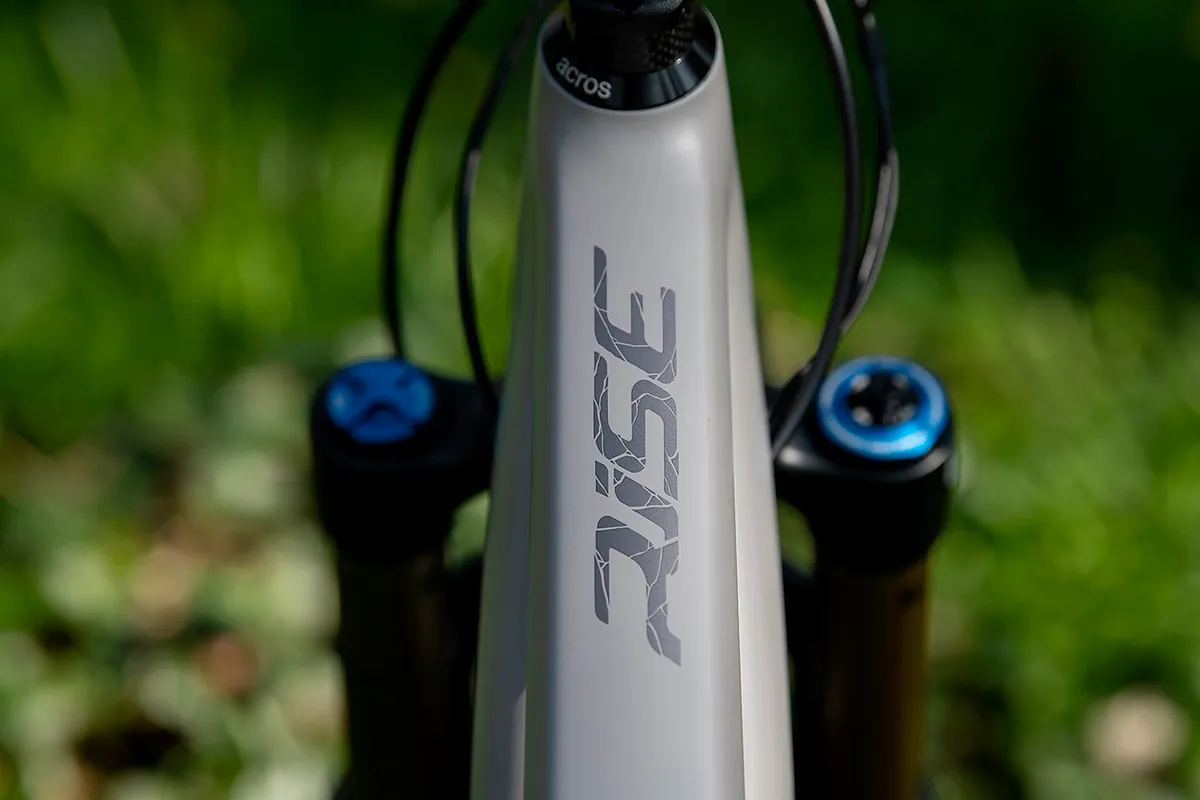
To save weight and reduce clutter, Orbea has fitted Shimano’s minimal EW-EN100 ‘junction box’ instead of the usual LCD display. This has two small LEDs that enable you to monitor the motor mode and remaining battery charge.
The junction box can be replaced with a standard Shimano STEPS display should you prefer.
As on Orbea’s trail and enduro bikes, the rear wheel is connected to the mainframe via a single-pivot swingarm, with a concentric pivot at the rear axle to separate the suspension from braking forces and a shock link to control the leverage curve. The system delivers 140mm of rear-wheel travel.
Geometry is modern but not cutting-edge, and more trail- than enduro-focused. The XL size I tested has a 500mm reach, 65.5-degree head angle, 76.5-degree seat tube angle and 1,255mm wheelbase. Lengthy seat tubes (508mm, XL) limit how long a dropper post you can fit.
Orbea Rise H10 geometry
| | S | M | L | XL |
|---|---|---|---|---|
| Seat angle (degrees) | 77 | 77 | 76.5 | 76.5 |
| Head angle (degrees) | 66 | 66 | 66.5 | 66.5 |
| Chainstay (mm) | 445 | 445 | 445 | 445 |
| Seat tube (mm) | 381 | 419 | 457 | 508 |
| Top tube (mm) | 565 | 592 | 619 | 649 |
| Head tube (mm) | 95 | 105 | 120 | 140 |
| Bottom bracket drop (mm) | 35 | 35 | 32 | 32 |
| Bottom bracket height (mm) | 336 | 336 | 336 | 336 |
| Wheelbase (mm) | 1,180 | 1,205 | 1,229 | 1,255 |
| Standover (mm) | 710 | 736 | 766 | 776 |
| Stack (mm) | 604 | 613 | 627 | 646 |
| Reach (mm) | 425 | 450 | 474 | 500 |
Orbea Rise H10 specifications
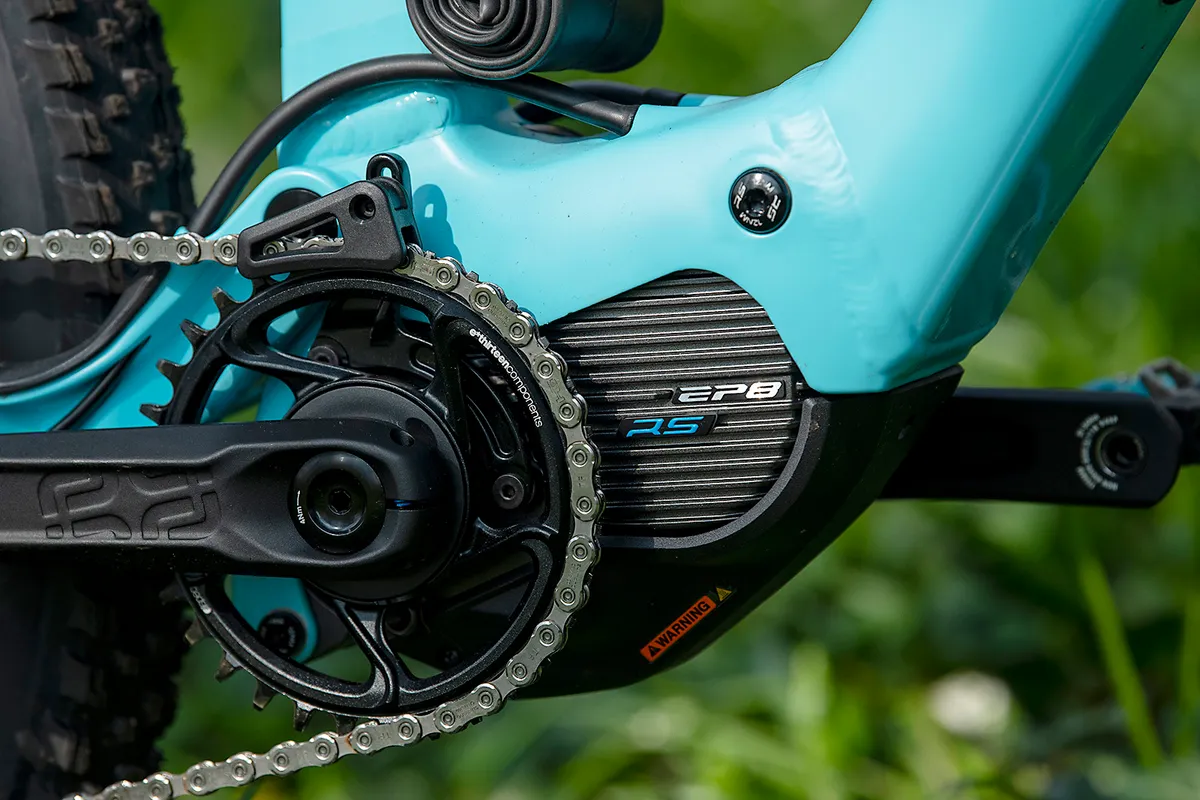
The H10 has a decent Shimano XT-based spec with top-end Factory-series suspension.
While the standard bike (£6,399) is equipped with a Fox 34 fork and two-pot Shimano brakes, my bike came with a couple of worthy upgrades – a burlier, 10mm-longer-travel Fox 36 fork ( £135) and four-pot stoppers ( £89).
These and other parts can be swapped using Orbea’s online bike configurator, which also enables you to select your preferred dropper post length.
Opt for one of the range-topping carbon models and you can even select your own paint and decal colours.
E*thirteen provides the cranks – and advises checking the EP8 BB axle for cracks regularly. I've had no problems with the EP8.
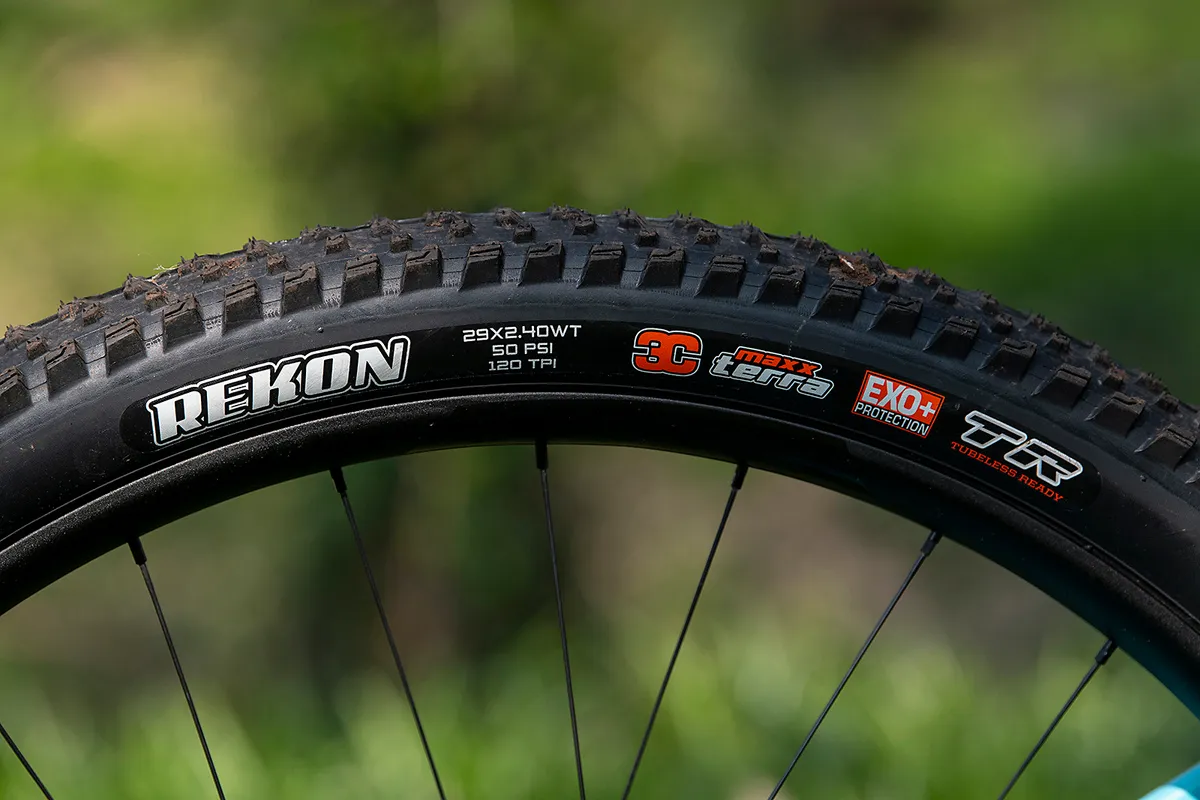
Elsewhere, you get a 2.4in Maxxis Dissector and Rekon tyre combo, mounted on wide (30mm internal) Race Face rims, which means they blow up with a good profile.
A carbon Race Face bar tops things off nicely, although I didn’t get on with the Fizik Taiga saddle.
Orbea Rise H10 ride impressions

With a bigger battery and more powerful motor than lightweight rivals such as Specialized’s Turbo Levo SL (240Wh, 35Nm) and Lapierre’s eZesty (250Wh, 55Nm), the Rise H winches you up climbs with no trouble at all, despite not having quite the same grunt as a ‘full fat’ ebike.
The ride feel is exactly as Orbea claims, too – “less e, more bike”. Power is fed in more gradually when you stamp on the pedals, especially in the lower of the two assistance profiles, which can be tweaked using Shimano’s E-Tube app.
A 540Wh battery isn’t big by modern standards, but the Rise H’s lighter frame weight, limited torque and more trail-orientated spec mean the motor has less work to do than on a heavier bike, so you get more miles from the same size powerpack.
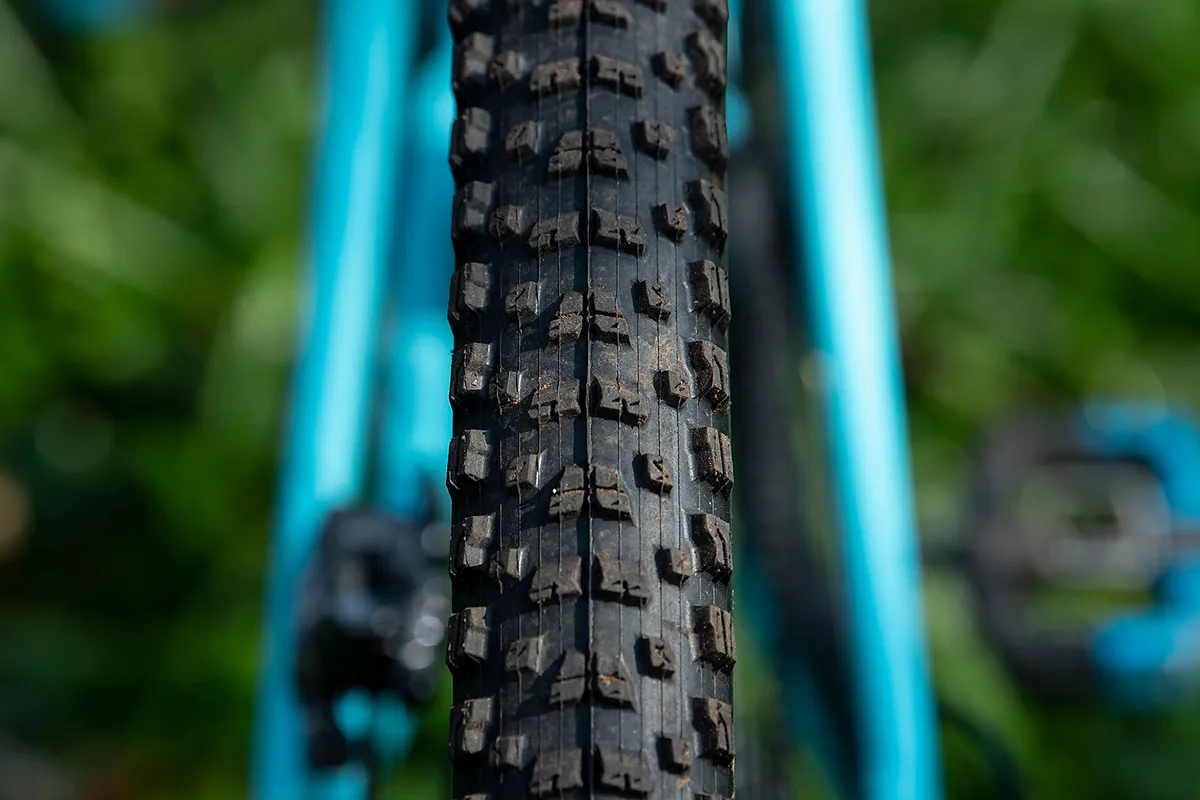
This, Orbea says, is why the carbon version – said to weigh around 2kg less – gets away with having an even smaller battery.
Orbea claims you can do five-and-a-half hours of riding, with 3,500m of climbing, from a single charge when in ‘Eco’ mode, or just under half that in ‘Boost’.
I certainly had no problems with running out of juice on everyday rides, although the limited battery info – just a red light when remaining charge dips below 21 per cent – does make longer jaunts somewhat anxiety-inducing.
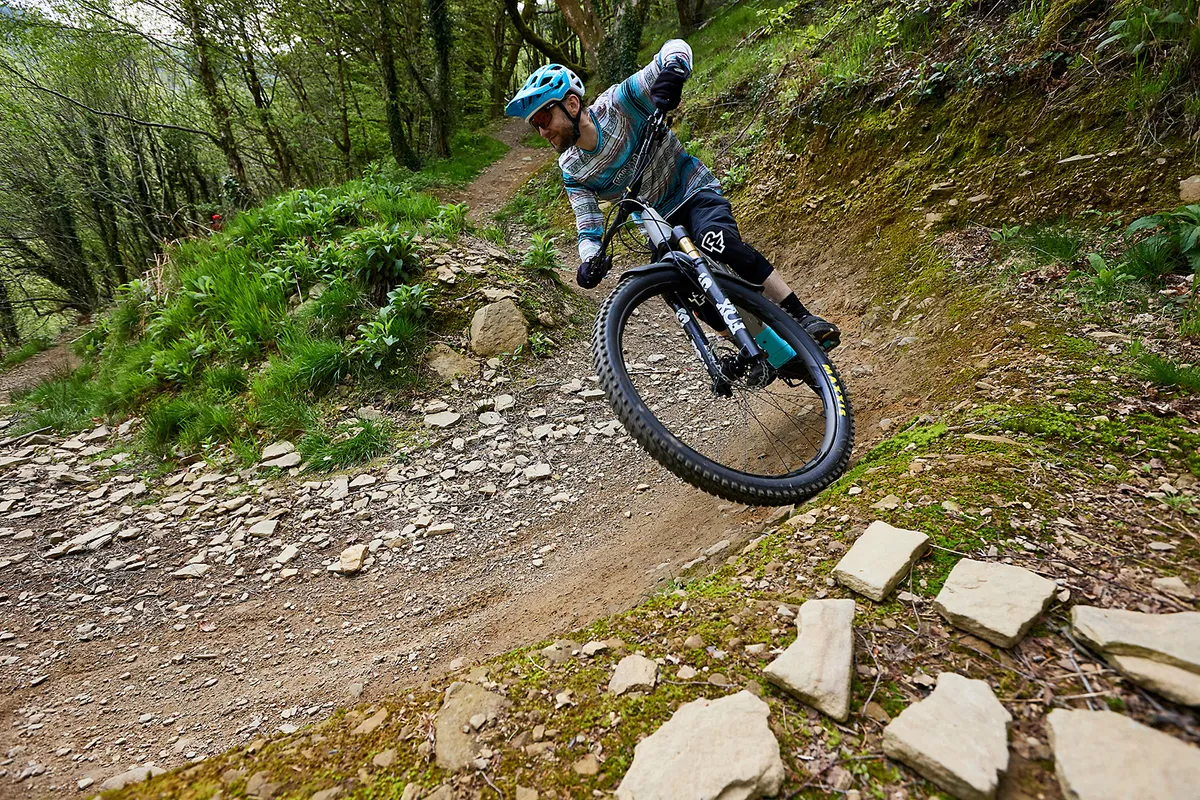
If you have a Garmin bike computer, you can view battery life, mode, assistance levels, speed and more, but we’d rather just have a standard Shimano SC-7000 head unit.
Sticking with the negatives for a second, I’d prefer a shorter seat tube, in these days of 200mm dropper posts, and a full-size 200mm front brake rotor.
Also, while the treads roll fast and are fine for summer riding, I’d want to upgrade to something toothier for typical UK riding.
The EXO Protection casing up front is also asking for trouble on an ebike, even a lightweight one, if you like rocky trails.
Orbea Rise H10 bottom line
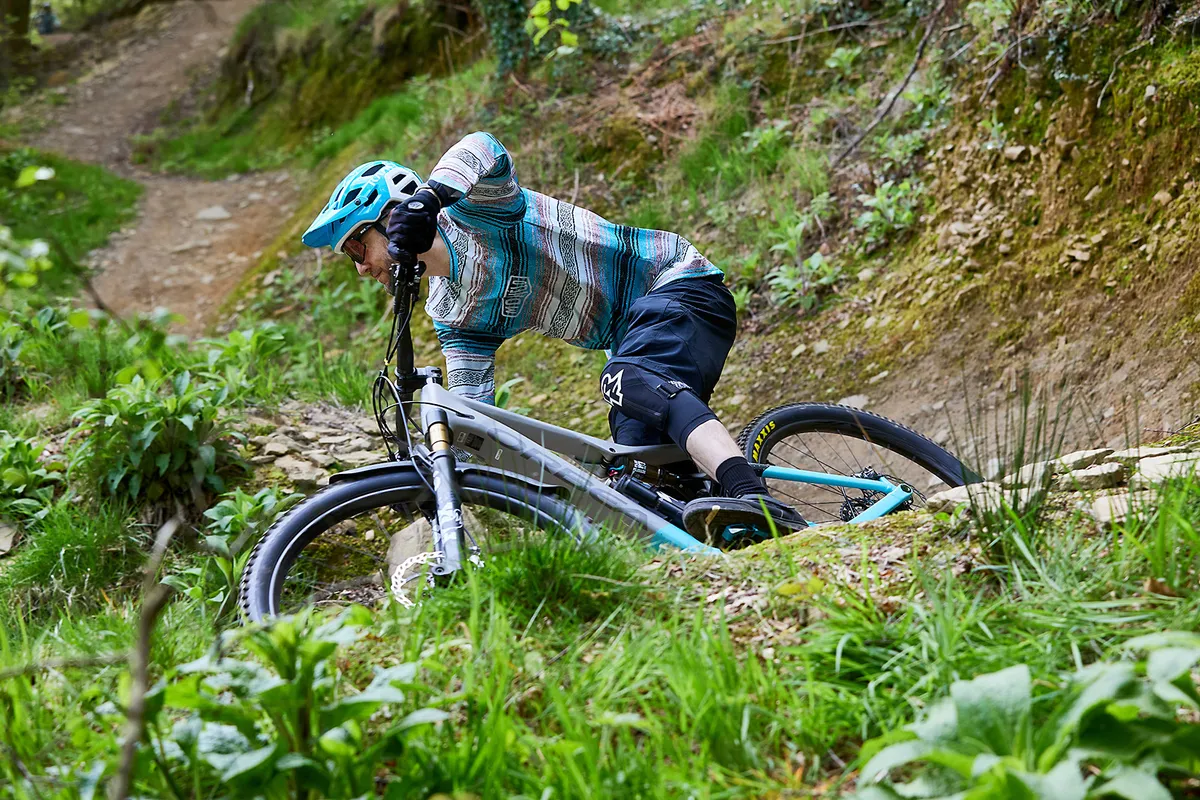
Tyre upgrades aside, there’s little to complain about with the Orbea Rise H10. While it may not be as light as its carbon sibling or competitors, it's still noticeably easier to throw around the trail than a standard ebike.
This is aided by its 445mm chainstays, which strike a good balance between flickability and stability on the XL size. It feels most at home pumping through rollers and berms or flowing along rollercoaster singletrack, where its firm suspension gives plenty of pop.
However, it can handle rougher trails too, just not with quite such sure-footedness and smoothness as more enduro-orientated full-fat ebikes with more travel, better-damped tyres and stability-enhancing additional heft.
Product
| Brand | orbea |
| Price | 6623.00 GBP |
| Weight | 20.8000, KILOGRAM (XL) - without pedals |
Features
| Fork | Fox 36 Factory GRIP2, 150mm travel |
| br_stem | Race Face Aeffect R |
| br_chain | Shimano |
| br_frame | Hydroformed aluminium alloy, 140mm travel |
| br_motor | Proprietary Shimano STEPS EP8 RS motor w/ 540Wh battery |
| Tyres | Maxxis Dissector 3C MaxxTerra EXO (f) and Maxxis Rekon 3C MaxxTerra EXO+ ® 29x2.4in |
| br_brakes | Shimano Deore XT M8120, 180mm rotors |
| br_cranks | e*thirteen e*spec Plus cranks |
| br_saddle | fi’zi:k Taiga S-alloy |
| br_wheels | Race Face Turbine R 30 |
| br_shifter | Shimano Deore XT M8100 |
| br_cassette | Shimano 12spd |
| br_seatpost | OC Mountain Control MC20 dropper |
| br_handlebar | Race Face Next R carbon, 780mm |
| br_rearShock | Fox Float DPS Factory |
| br_availableSizes | S, M, L, XL |
| br_rearDerailleur | Shimano Deore XT M8100 |
